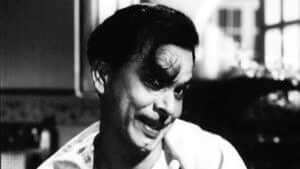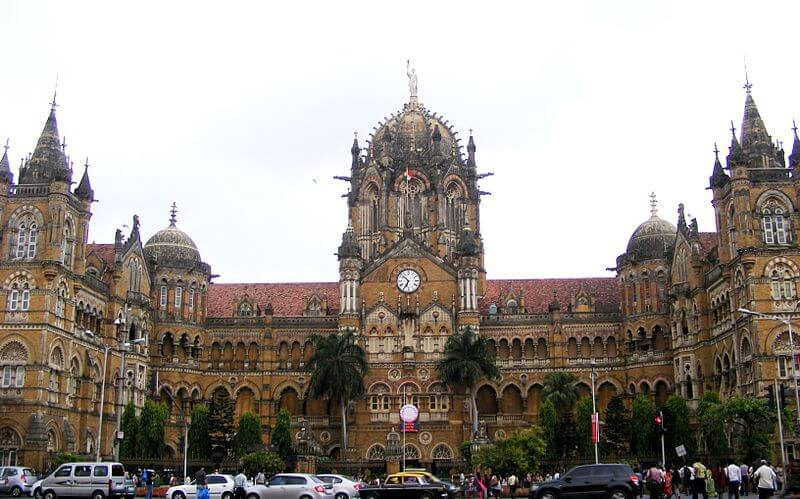Film-makers seem to have fallen out of love with Mumbai, the city in which they live and work. No ode has been sung to ‘Bambai’ in the last two decades
As home to Hindi film industry, Mumbai has hogged the space as backdrop of many films.The romanticisation of the city and various stereotypes that it has spawned partly owe their origin to the Mumbai portrayed on the Hindi screen. Irony has been a constant presence in cinematic imagination of the city — interplay of affluence with stark poverty, luxury with dehumanised living conditions. One is reminded of what Suketu Mehta wrote in his work Maximum City (Alfred A. Knopf, 2004): “Bombay is the future of urban civilisation on the planet. God help us.’’
As musical sub-texts of Mumbai tales, how have Hindi film songs captured various shades of the city? Have they got stuck in celebrating the clichéd appeal of the city as the ‘city of gold’ or the ‘city that never sleeps’ or ‘city of dreams’? Or have they given musical expression to the alienation and anxiety in the city too?
In the last two decades, the cycle of terrorist violence in the city and urban flooding have witnessed Hindi screen narratives and the songs engaging with the trite ‘Mumbai spirit’. One wonders how different it is anyway to how people respond to such tragic exigencies in any other part of the country. It seems, it hasn’t always been like that only. For seeking answers to the above questions, one may like to have a look at a few defining songs which reflect Hindi cinema’s engagement with Bombay or Bambai in the post-Independence era.
In the 1950s, Dilip Kumar might have been Nehru’s Hero in the Life of India (to use Lord Meghnad Desai’s phrase) but it was Johnny Walker who enacted the first lyrical statement on Bombay in Hindi cinema in CID (1956). The well-rendered Mohammad Rafi- Geeta Dutt number in the movie may sound banal now but was but it was an early expression of the
deepening class divide in what was then Bombay. Johnny Walker was shown humming Majrooh Sultanpuri’s words through the streets and on a tonga at Marine Drive which may look idyllic for today’s times:
Aye dil hai mushkil /jeena yahan/Zara hat ke zara bach ke/Yeh hai Bombay Meri Jaan/ Beghar ko aawara yahan kehte hass hass /Khud kaate gale sabke kahe isko business/ Ik cheez ke hain kai naam yahan/Aye dil hai mushkil jeena yahan..
Two years later, it was Phir Subah Hogi (1958) in which the great lyricist Sahir Ludhianvi captured the irony of Bombay’s destitute with a song that was written as a satirical parody on Iqbal’s patriotic verse Saare Jahan Se Achcha. Rendered by Mukesh for Raj Kapoor, the song mocked post-independence Bombay with lines like: Chiin-o-Arab Hamaaraa, Hindostaan Hamaaraa/ Rahane ko ghar nahii hai, saaraa jahaan hamaaraa/ Kholii bhii chhin gai hain, benchein bhii chhin gai hain/Sadko pe ghuumataa hai ab kaaravaan hamaaraa/Jiitani bhii buildinge thin/Sethon ne baant li hain/Footpath Bambai ke hain Aashiyaan Hamaaraa/Sone ko ham kalandar, Aate hain Bori Bandar.
Sahir returned next year to pen another song in Pyasa (1957). The song, enacted by Guru Dutt, is a lyrical foray into the dark alleys of Bombay’s flesh trade. With lines exposing fault-lines of the new republic, Rafi hummed to SD Burman’S tunes:
Ye kooche ye neelam ghar dilkashi ke/Ye loot te huwe caravan zindagi ke/ Kahan hai, kahan hai, muhafiz khudi ke/Jinhe naaz hai Hind par vo kahan hai/Vo ujale dareechon me payal ki chhan chhan/ Thaki haari sanson pe tabale ki dhan-dhan/Ye be-ruuh kamaron me khansi ki than-than/Jinhe naaz hai hind par wo kahan hain….
In 1970s, two songs in Hindi mainstream cinema are remarkable for how they sought to express the alienation that haunted the psyche of Bombay city. In a song for Gharonda (1977), Gulzar brought to words this alienation felt by a young man trying to find himself in meaningless urban spaces. Amol Palekar was seen brooding in construction sites of the city as Bhupinder Singh sang:
Ek akela is saher me raat me aur dophar mein/Aabodana dhoondhta hai, ashiyana dhoondta ha/ Din khali khali bartan hai raat hai jaise andha kuan/In gahri andheri ankhon me anshu ki jagah aata hai dhuan/Jeene ki wazah to koi nahi marne ka bahana dhoondta hai/ Ek akela iss seher mein

In the following year, Shahryar expressed the anxiety and alienation in the city with lyrics that had the essence of evocative poetry. In Gaman (1978), Farooq Sheikh enacted the song as a Bombay taxi driver with the taxi itself becoming a symbol of the anxiety and alienation in the city. Suresh Wadekar hummed:
Seene mein jalan aankhon mein tufaan saa kyun hai/ Iss saher mein har shaks pareshaan saa kyun hain/Dil hain to, dhadakane kaa bahaanaa koee dhoondhe/Pathar kee tarah beheesa-o-bejaan saa kyUn hain?
Hindi movies continued to be made with Bombay as the backdrop, though city-themed songs became less frequent. The clichéd juxtaposition of poverty and wealth could be seen in Ye hai Bambai Nagaria song in Amitabh Bachchan starrer Don (1978). Four years before the city was renamed Mumbai, Bam Bam Bam Bambai number in Govinda starrer Swarg (1991) was perhaps the last lyrical use of Bambai in a Hindi film song.
The same year, Patthar Ke Phool (1991) had numerous references to city’s streets as Salman Khan wooed and romanced debutant Raveena Tandon. The duet sung by SP Balasubramaniam and Lata Mangeshkar had names of at least 10 better known roads of Bombay.
Mira Nair’s Salam Bombay (1988) and Sudhir Mishra’s Dharavi (1991) were landmarks in Hindi cinema’s exploration of Bombay’s underclass and underbelly. Mani Ratnam’s Hindi version of his Tamil film Bombay (1995) was centred around the communal riots in the city following the Babri Masjid demolition. Thirteen years later, Nishikant Kamat’s Mumbai Meri Jaan (2008) sought to portray the city grappling with the train blasts of 2006. None of these movies had a poignant Bombay song.
City songs haven’t kept pace with numerous plots which continue to feature Mumbai as the plot. In the last three decades, there hasn’t been any remarkable Mumbai number, perhaps a reflection of the fading away of the distinct halo of the city and shedding of the clichéd ideas which accompany it.





